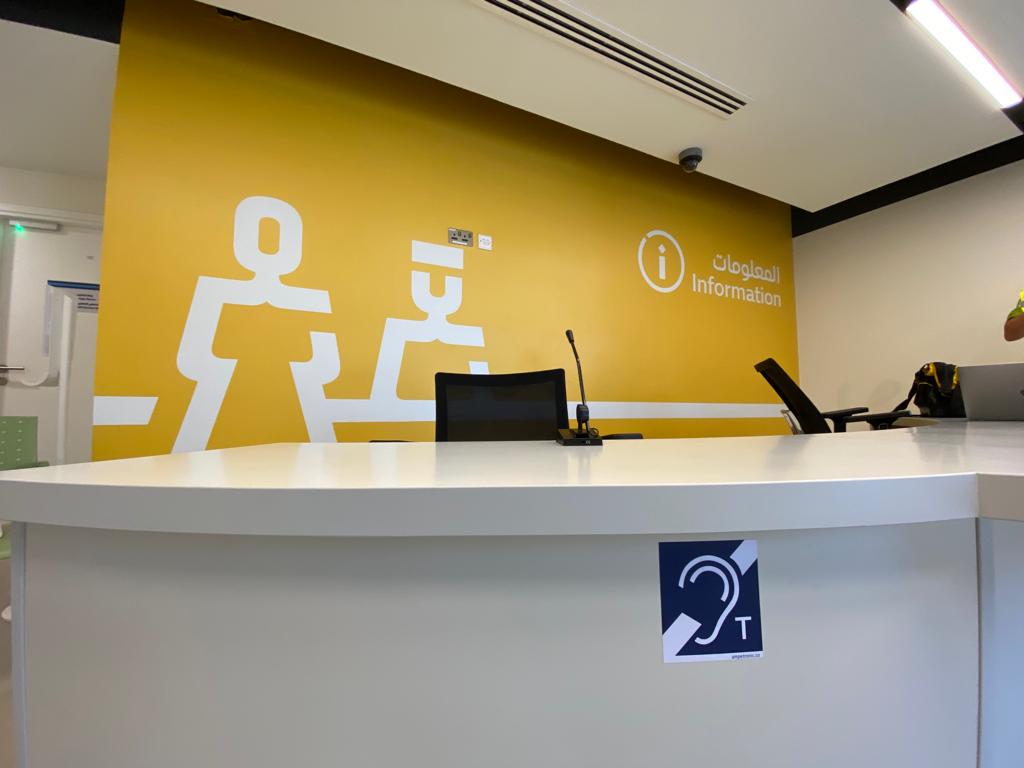
Why do reception desks need induction loops?
According to BS8300 – A hearing enhancement system, using induction loop, infrared or radio transmission, should be installed in rooms and spaces used for meetings, lectures, classes, performances, spectator sports or films, and at service or reception counters where the background noise level is high or where glazed screens are used.
Despite this law being in place, many applicable built environments still fail to meet accessibility requirements under the Equality Act, by falling short of their requirement to provide any hearing enhancement system, despite Hearing Loops being the international hearing enhancement standard.
Though not everyone is aware of the importance of auxiliary aids, their inclusion is vitally important among people who are deaf and hard of hearing to communicate with others around them. An induction loop or similar should always be present at premises where visitors are likely to experience presentations, meetings, training, or any kind of interaction with another person.
Although effort must be made to install auxiliary equipment where disabled people are likely to interact with a member of staff, receptions are often the most common area of the built environment for this scenario and are also the first experience a potential visitor will likely have with your facility.
Whether you provide an induction loop at your information counter or reception desk, is a make-or-break situation when it comes to how your facility is perceived by disabled people, as either inclusive to their needs or not – which in turn, could result in a loss of visitors, revenue, or interest, and will ultimately damage your brand. Conversely, being inclusive to the needs of disabled people will result in a greater visitor pool, boosting your public image, and unlocking access to the Purple Pound.
So, how do they work?
Hearing loops work by not only allowing audio from a microphone to be transmitted wirelessly and directly to a hearing aid via a magnetic field, but they also reduce the background noise and reverberation that plagues a more typical microphone system, due to the acoustics of the space. What’s more is that the number of users utilising an Induction Loop system has no detrimental effect to crystal clear sound quality they provide.
It’s also not just reception desks. Hearing loops make the difference between allowing a person to hear, or not to hear, in a multitude of settings. They’re fit for purpose anywhere where a small group of people is likely to gather, such as classrooms lecture theatres, till areas, banks, cinemas, and places of religious worship. The list is endless.
It’s important to have signage to advertise the presence of a Hearing Loop in a public space, as well as the equipment itself. The symbol (seen, left) assures people with hearing loss that their needs will be met, and that your facility is leading the way in doing the right thing.
Direct Access has a team of disabled service engineers who can guide you through the entire process of installation, maintenance, and orientation of our industry-best Hearing Loop kits. Whether you install a single hearing loop or several across your site, our team can ensure that the equipment and this accompanying signage are advertised properly.
